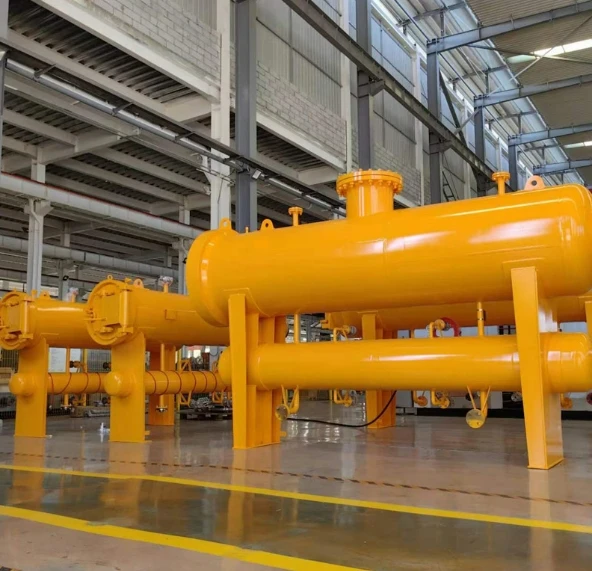
Dec . 23, 2024 17:19
Back to list
filter separator
Understanding Filter Separators Principles and Applications
In various industrial processes, particularly in the oil and gas sector, the significance of filter separators cannot be overstated. These essential devices play a pivotal role in enhancing the efficiency of production and ensuring the safety and reliability of operations. This article explores the principles of filter separators, their components, and their applications across different industries.
What is a Filter Separator?
A filter separator is a type of equipment designed to separate solids, liquids, and gases from a mixture, ensuring that the output meets specific quality standards. The core function of a filter separator is to remove contaminants from a fluid stream, thereby preventing damage to downstream equipment and ensuring that the process continues smoothly.
Principles of Operation
The operation of filter separators is often based on the principles of filtration and separation. Depending on the application, filter separators can utilize various methods, including gravity separation, mechanical filtration, and even advanced technologies such as coalescence.
1. Gravity Separation This is one of the most basic methods employed in filter separators. Different phases—such as water, oil, and gas—are allowed to settle by gravity due to their varying densities. Over time, the heavier components, like water or solids, settle at the bottom, while the lighter phase, usually gas or oil, rises to the top.
2. Mechanical Filtration This method involves using physical barriers (filters) that allow the passage of certain particle sizes while trapping others. This is particularly useful for removing particulates from liquids and gases, ensuring that only clean fluids pass through the system.
3. Coalescence In some applications, filter separators use coalescing filter elements to bring small liquid droplets together, forming larger drops that can be easily separated. This technique is particularly effective in separating water from oil, improving overall product quality.
Key Components
Filter separators typically consist of several key components
- Inlet This is where the mixture enters the separator
. The design of the inlet can significantly affect the efficiency of the separation process.filter separator

- Separation Chamber This is the heart of the filter separator. The design and size of the chamber are crucial, as they determine how effectively the different phases can be separated.
- Filter Elements These are responsible for capturing solid particles and other contaminants from the liquid or gas phase.
- Outlet After the separation process, the clean product exits through designated outlets. Depending on the design, separate outlets may exist for each phase.
Applications Across Industries
The applications of filter separators span various industries, including
- Oil and Gas In upstream operations, filter separators are used to separate water, gas, and solid particulates from crude oil. In downstream processing, they help ensure that refined products meet stringent quality standards.
- Food and Beverage In this sector, filter separators are employed to remove impurities from raw materials, ensuring the final products are safe for consumption.
- Pharmaceuticals The need for high purity levels in pharmaceutical production necessitates the use of filter separators to maintain product integrity and compliance with regulatory standards.
- Chemical Processing Filter separators are used to enhance product quality by removing contaminants and ensuring that raw materials are suitable for further processing.
Conclusion
Filter separators are indispensable tools in modern industrial operations, providing essential filtration and separation functions across various sectors. By understanding their principles, components, and applications, industries can enhance operational efficiency, ensure compliance with quality standards, and reduce environmental impact. As technology continues to evolve, the design and functionality of filter separators will likely improve, leading to even greater efficiencies and capabilities in diverse applications.
Latest news
-
Safety Valve Spring-Loaded Design Overpressure ProtectionNewsJul.25,2025
-
Precision Voltage Regulator AC5 Accuracy Grade PerformanceNewsJul.25,2025
-
Natural Gas Pressure Regulating Skid Industrial Pipeline ApplicationsNewsJul.25,2025
-
Natural Gas Filter Stainless Steel Mesh Element DesignNewsJul.25,2025
-
Gas Pressure Regulator Valve Direct-Acting Spring-Loaded DesignNewsJul.25,2025
-
Decompression Equipment Multi-Stage Heat Exchange System DesignNewsJul.25,2025

